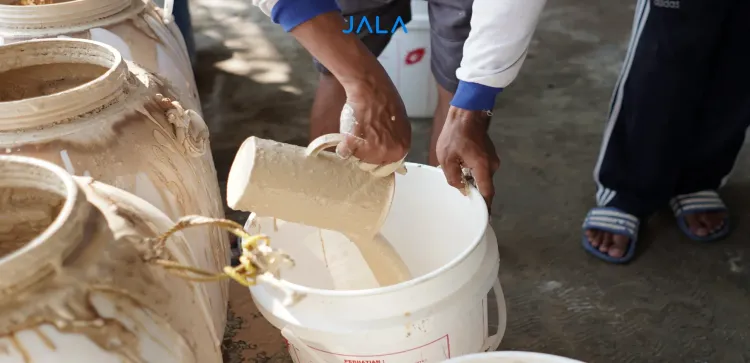
Shrimp cultivation systems with a plankton-bacteria combination are commonly used by intensive farmers. This system balances the concentration of planktons and bacteria, controlling the complex relationship between them to support shrimp growth and survival.
Previously, we have discussed cultivations with the plankton system and biofloc system. For this discussion, we will explore the plankton-bacteria combination system which has the following characteristics:
- Requires the step of growing planktons and bacteria during water preparation stage
- Requires monitoring of plankton density by daily turbidity checks 3.A pplies probiotic fermentation 1-2 times per week
- Requires controlling the balance of planktons and bacteria so none dominates the other
Application of the plankton-bacteria combination system
Preparation stage
Application of the plankton-bacteria combination system begins in the preparation stage. Water preparation involves sterilizing it before growing planktons and probiotic bacteria. Planktons can be grown by fermenting various materials such as molasses, rice bran, and fertilizers. The fermentate is then poured in water. To grow probiotic bacteria, farmers can grow ready-to-use products or those that require activation.
Cultivation stage
After stocking, farmers begin the feed management stage, followed by water and shrimp growth management. Cultivation should be regularly monitored visually, using water quality measurement devices, and through laboratory checks.
Read: Plankton and Shrimp Farm Water Quality
Throughout the cultivation process, plankton stability is maintained by daily monitoring of turbidity and daily pH fluctuations. Aim for a turbidity level of 30-40 cm and a pH range of 7.5-8.0 with daily fluctuations of 0.2-0.5. Bacterial management also needs to be conducted by laboratory checks. Probiotic control can be given 1-2 times per week as needed and based on the laboratory test results.
Cultivations with a plankton-bacteria combination system should also control total organic matter, plankton abundance and dominance, as well as total bacteria against total vibrio ratio. Observations should be done regularly to maintain them within an ideal range so as not to disrupt the health and growth of shrimp. Plankton and bacteria management, including checking turbidity and checking water and sediment samples in the laboratory, should be carried out until the end of cultivation. All treatments to decrease or increase plankton and bacteria should be based on the laboratory test results.
Important reminders for implementing the plankton-bacteria combination system
The plankton-bacteria combination system is highly common among Indonesian farmers. However, one of the drawbacks of this system is the high risk of blooming phytoplanktons which causes low water transparency, lack of DO at the bottom of the pond, and risk of toxin accumulation such as ammonia, nitrites, and hydrogen sulfide.
Thus, shrimp farms implementing this system are highly susceptible to poor water quality, especially if there is a buildup of excess organic matter, which threatens to limit productivity. Farmers who implement this system should regularly monitor physical, chemical, and biological parameters in their farm.





